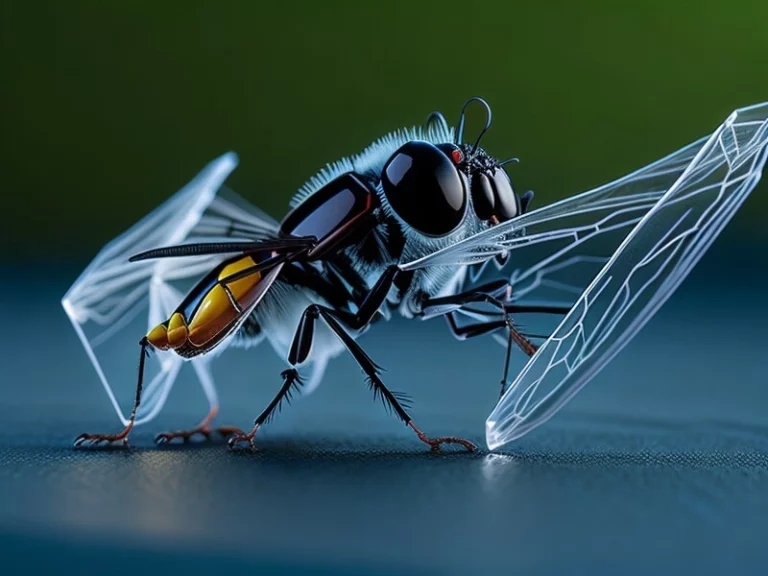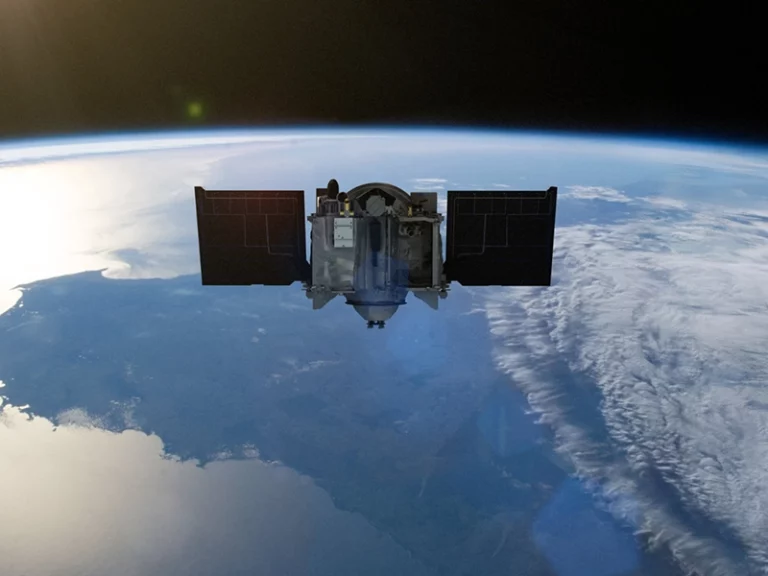The solar system is a marvel of the universe, with its eight planets and dozens of moons swirling around a fiery ball called the Sun. Here are some mind-blowing and interesting facts about the solar system:
- The solar system is over 4.6 billion years old.
- The solar system is located in the Orion Arm, a spiral arm of the Milky Way galaxy.
- The largest planet in the solar system is Jupiter, which is more massive than all the other planets combined.
- The smallest planet is Mercury, which is slightly larger than the Earth’s Moon.
- The eight planets in the solar system, in order of their distance from the Sun, are Mercury, Venus, Earth, Mars, Jupiter, Saturn, Uranus, and Neptune.
- Four of the eight planets are known as the “gas giants” because they are made mostly of gas: Jupiter, Saturn, Uranus, and Neptune.
- The four inner planets (Mercury, Venus, Earth, and Mars) are known as the “terrestrial planets” because they are made mostly of rock and metal.
- The asteroid belt lies between Mars and Jupiter, and it contains millions of rocky objects.
Facts About The Planets in The Solar System
Jump to a planet’s facts:
Mercury
Mercury is the smallest planet in the solar system and is closest to the Sun. Here are some fascinating facts about this tiny planet:
- Mercury’s surface is covered in craters, mountains, and valleys.
- The planet has no atmosphere and has extreme temperature variations between its day and night sides.
- Mercury takes just 88 Earth days to orbit the Sun, making it the fastest-moving planet in the solar system.
- Mercury’s day is longer than its year, meaning one day on Mercury lasts 176 Earth days.
- Only two spacecraft have ever visited Mercury: NASA’s Messenger and Mariner 10.

- Because of its small size and proximity to the Sun, Mercury has a weaker gravitational pull than Earth. This means that objects weigh less on Mercury than they do on Earth. For example, a 150-pound person on Earth would weigh only 57 pounds on Mercury.
- Mercury is named after the Roman messenger god, who was known for his speed and agility. The planet’s name is fitting since it moves so quickly across the sky.
- Because of its small size and lack of atmosphere, Mercury has no moons or rings. It also has no magnetic field, which means that it is more vulnerable to solar winds and charged particles from the Sun.
- Mercury’s interior is thought to be composed of a large iron core, which makes up about 70% of its mass. Scientists believe that this core may be partly molten and responsible for generating a weak magnetic field.
Venus
Venus is the second planet from the Sun and is often referred to as Earth’s sister planet. Here are some intriguing facts about Venus:
- Venus is the hottest planet in the solar system, with a surface temperature that can reach almost 900 degrees Fahrenheit.
- It rotates in the opposite direction to most planets, meaning its day is longer than its year.
- The planet’s thick atmosphere is mostly made of carbon dioxide and sulfuric acid, making it impossible for humans to live there.
- Venus is covered in craters, mountains, and volcanoes, including one volcano that is over 8 miles high.
- The planet goes through phases similar to the Moon, and it can be seen from Earth without a telescope.

- Venus is the third brightest object in the sky after the Sun and our Moon. It can be seen from Earth as a bright “morning star” or “evening star” depending on its position relative to the Sun.
- Venus has a very slow rotation, taking 243 Earth days to complete one rotation on its axis. In contrast, it takes only 224.7 Earth days for Venus to complete one orbit around the Sun.
- Scientists believe that Venus was once more similar to Earth in terms of its climate and possibly even had oceans of liquid water. However, a runaway greenhouse effect caused by the buildup of carbon dioxide in its atmosphere led to the current inhospitable conditions on the planet.
Earth
Earth is the third planet from the Sun and is the only planet known to have life. Here are some incredible facts about our home planet:
- It is the only planet with water on its surface, which covers more than 70% of its surface area.
- Earth is the only known planet with an atmosphere that contains oxygen, which is essential for life.
- Its atmosphere also protects us from dangerous solar rays and cosmic radiation from space.
- Earth has one natural satellite, the Moon, which is the fifth-largest moon in the solar system.

- Earth is not a perfect sphere, it’s slightly flattened at the poles and bulging at the equator due to its rotation. This means that its diameter at the equator is about 12,742 km (7,926 miles) while its diameter from pole to pole is about 12,714 km (7,900 miles).
- The planet’s rotation around its axis takes approximately 24 hours, which is why we have day and night. Its rotation is also gradually slowing down, but it’s a very gradual process that takes millions of years to noticeably affect our daily lives.
- The Earth’s core is believed to be mostly composed of iron and nickel, and it generates a magnetic field that extends into space. This magnetic field is also responsible for creating the auroras (northern and southern lights) when charged particles from the Sun interact with the Earth’s magnetic field.
Mars
Mars, also known as the Red Planet, is the fourth planet from the Sun and is famous for its reddish hue. Here are some interesting facts about this planet:
- Mars is home to the largest volcano in the solar system, Olympus Mons, which is three times taller than Mount Everest.
- There are deep canyons and valleys on its surface, including Valles Marineris, which is the largest canyon in the solar system.
- Mars has ice caps at its poles, and scientists believe there may be traces of water underneath its surface.
- The planet’s atmosphere is mostly carbon dioxide, and its thin atmosphere makes it much colder than Earth.
- NASA’s Perseverance rover landed on Mars in February 2021 to search for signs of ancient life.

- Mars is often referred to as the “Red Planet” because of its reddish appearance. This is due to the presence of iron oxide (rust) on its surface.
- The planet is named after the Roman god of war because of its reddish color, which was associated with blood and war.
- Mars has a day-night cycle that is similar to Earth’s, with a day lasting 24.6 hours.
- Mars is about half the size of Earth and has about one-third the gravity of Earth. This means that objects weigh less on Mars than they do on Earth.
- The first successful mission to Mars was NASA’s Viking 1, which landed on the planet in 1976.
- In addition to the Perseverance rover, several other missions are currently exploring Mars, including NASA’s Mars 2020 mission and the United Arab Emirates Hope mission.
- The average temperature on Mars is about -80 degrees Fahrenheit (-62 degrees Celsius).
- Mars has two small moons, Phobos and Deimos, which are thought to be captured asteroids.
Jupiter
Jupiter, the largest planet in the solar system, is fifth from the Sun and is often referred to as a gas giant. Here are some astonishing facts about this planet:
- Jupiter has the most massive magnetic field in the solar system, which creates intense radiation belts around the planet.
- The planet has 79 known moons, including the four largest moons called the Galilean moons: Io, Europa, Ganymede, and Callisto.
- Its Great Red Spot is a massive storm that has been raging on the planet for over 300 years.
- Jupiter’s core is thought to be made of rock and metal, surrounded by layers of liquid hydrogen and helium gas.
- A “year” on Jupiter lasts almost 12 Earth years, and a “day” on the planet is just over 9 hours long.

- Jupiter has a diameter of about 86,881 miles and a mass of 1.898 x 10^27 kg, which is more than twice the mass of all other planets combined.
- The planet’s atmosphere is mostly made up of hydrogen and helium, with traces of other gases such as methane, water vapor, and ammonia.
- Jupiter’s atmosphere has visible bands and zones caused by its rapid rotation, which takes about 9 hours and 56 minutes to complete.
- Jupiter’s magnetic field creates intense radiation belts and auroras near its poles.
- Jupiter has been visited by several spacecraft, including Pioneer 10 and 11, Voyager 1 and 2, Galileo, and Juno.
- Jupiter has trojan asteroids that share its orbit and are located at its Lagrange points.
- Jupiter’s strong gravitational pull played a crucial role in shaping the orbits of other planets and preventing collisions with Earth and other planets.
Saturn
Saturn, the sixth planet from the Sun, is perhaps best known for its beautiful rings. Here are some intriguing facts about this gas giant:
- Saturn’s rings are made up of millions of pieces of rock and ice, ranging in size from tiny dust specks to boulders the size of houses.
- The planet has at least 82 moons, the largest of which is called Titan.
- Saturn has winds that can exceed 1100 miles per hour, making it the windiest planet in the solar system.
- The planet’s density is so low that it would float if it were placed in water.
- Its day is almost 11 Earth hours long, and it takes almost 30 years to orbit the Sun.

- Saturn is the second-largest planet in the solar system, after Jupiter.
- Its atmosphere is mostly composed of hydrogen and helium.
- The planet’s magnetic field is around 578 times stronger than Earth’s.
- Saturn has a prominent hexagonal-shaped storm at its north pole.
- The Cassini spacecraft mission spent 13 years studying Saturn and its moons, ending in 2017.
- Saturn is visible to the naked eye from Earth and has been known since ancient times.
Uranus
Uranus, the seventh planet from the Sun, is the third of the gas giants. Here are some fascinating facts about this planet:
- Uranus is tilted at an angle of almost 98 degrees, meaning its poles are almost in its equatorial plane.
- It has a ring system like Saturn, but its rings are much darker and less distinct.
- Uranus has 27 known moons, each named after characters from William Shakespeare’s plays.
- The planet has a blue-green appearance due to the presence of methane in its atmosphere.
- A “year” on Uranus lasts almost 84 Earth years, and a “day” on the planet is just over 17 hours long.

- Uranus is the fourth largest planet in our solar system, after Jupiter, Saturn, and Neptune.
- It was discovered by British astronomer William Herschel in 1781, making it the first planet to be discovered with a telescope.
- The planet’s atmosphere is composed mainly of hydrogen and helium, with a small amount of methane.
- Uranus has a highly unusual magnetic field, which is tilted at an angle of 59 degrees to its axis of rotation.
- The planet experiences extreme seasons due to its axial tilt, with each pole experiencing 42 years of continuous sunlight followed by 42 years of darkness.
- Uranus has been visited by only one spacecraft, Voyager 2, which flew by in 1986 and provided us with the most detailed images and data on the planet to date.
Neptune
Neptune, the farthest planet from the Sun, is the fourth of the gas giants. Here are some captivating facts about this planet:
- Neptune has the strongest winds in the solar system, which can exceed 1500 miles per hour.
- The planet has 14 known moons, the largest of which is called Triton.
- Neptune’s Great Dark Spot is a massive storm that has been observed on the planet’s surface.
- Its atmosphere is mostly composed of hydrogen and helium, with traces of methane giving it a blue appearance.
- A “year” on Neptune lasts almost 165 Earth years, and a “day” on the planet is just over 16 hours long.

- Neptune is the eighth and farthest planet from the Sun in our solar system, located about 2.8 billion miles away from Earth.
- The planet was discovered in 1846 by astronomers John Couch Adams and Urbain Le Verrier, who predicted its existence based on irregularities in the orbit of Uranus.
- Neptune’s diameter is about 30,599 miles, making it the fourth-largest planet by size.
- The planet’s average temperature is about -353 degrees Fahrenheit (-214 degrees Celsius), making it the coldest planet in our solar system.
- Neptune has a faint ring system made up of five main rings named Galle, Le Verrier, Lassell, Arago, and Adams.
- Triton, the largest moon of Neptune, is the seventh-largest moon in the solar system and is thought to be a captured Kuiper Belt object.
- Neptune has been visited by only one spacecraft, NASA’s Voyager 2, which flew by the planet in 1989 and captured images of its atmosphere, moons, and rings.
Want to learn more about Neptune? Check out our other article about Neptune’s Distance from the Earth.
Pluto (Dwarf Planet)
Pluto was once considered the ninth planet of our solar system until 2006. The International Astronomical Union (IAU) redefined what it means to be a planet, and Pluto no longer met the new criteria.
- Pluto is located in the Kuiper Belt, a region beyond Neptune that is home to many icy objects.
- It was discovered in 1930 by astronomer Clyde Tombaugh.
- Pluto is very small, with a diameter of only about 1,400 miles (2,300 kilometers). This makes it smaller than several moons in our solar system, including Earth’s Moon.
- Pluto has a very eccentric orbit, which means that it sometimes comes closer to the Sun than Neptune. This was one of the reasons why it was difficult to study before the era of spacecraft exploration.
- In 2015, NASA’s New Horizons spacecraft flew by Pluto and provided the first detailed images and measurements of the dwarf planet. This mission revealed that Pluto has a complex surface with mountains, glaciers, and an atmosphere.
- Pluto’s atmosphere is very thin, composed mostly of nitrogen with some methane and carbon monoxide. Its surface temperature is also very cold, ranging from about -375 to -400 degrees Fahrenheit (-225 to -240 degrees Celsius).

While dwarf planets are not considered full-fledged planets, they are still important members of our solar system. They are studied by astronomers to better understand the evolution and formation of our solar system.
Moons of The Solar System
In addition to the eight planets, the solar system is home to dozens of moons. Here are some fascinating facts about some of the more notable moons:
- Our Moon, Earth’s only natural satellite, is the fifth-largest moon in the solar system and is the brightest object in the night sky.
- Io, a moon of Jupiter, is the most volcanically active object in the solar system.
- Europa, another moon of Jupiter, has a thick icy crust that scientists believe may cover an underground ocean.
- Titan, a moon of Saturn, is the only moon in the solar system with a thick atmosphere and is the second-largest moon overall.
- Triton, a moon of Neptune, is the coldest known object in the solar system and has geysers spewing out ice and gas.
Here’s a list of the planets in our solar system and some of their major moons:
- Mercury – No known moons
- Venus – No known moons
- Earth – 1 moon (the Moon)
- Mars – 2 moons Phobos and Deimos
- Jupiter – 79 known moons, including Io, Europa, Ganymede, and Callisto.
- Saturn – 82 known moons, including Titan, Enceladus, Mimas, and Rhea.
- Uranus – 27 known moons, including Miranda, Ariel, Umbriel, Titania, and Oberon.
- Neptune – 14 known moons, including Triton, Nereid, Proteus, and Larissa.
- Pluto – 5 known moons, including Charon, Nix, and Hydra.
Would you like to explore the Solar System live? Check out this other article about NASA’s Solar System Explorer.
Conclusion
The solar system is an amazing and mind-bending complex system that contains a variety of planets, moons, and other objects.
From the smallest planet (Mercury) to the largest (Jupiter), each planet has its unique features and characteristics that make it fascinating and worth studying.
And with new space missions and discoveries made every year, there is always more to learn about our stunning solar system.
Note: the images used in this article are for illustration purposes only and might be slightly incorrect.
Reference
Solar System – Wikipedia. Link to the source





